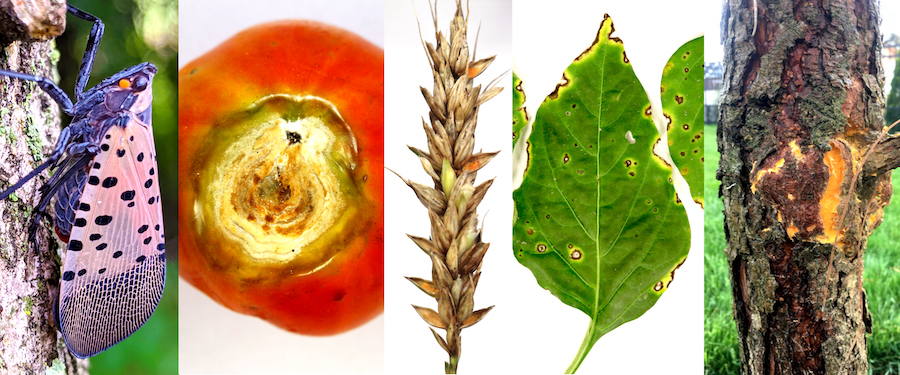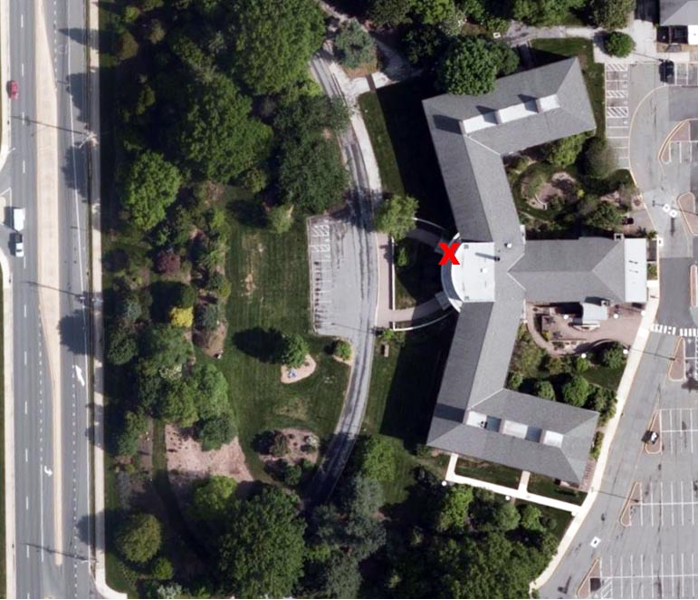
UD Plant Diagnostic Clinic

The Plant Diagnostic Clinic at the University of Delaware accepts plant samples showing signs or symptoms of disease or pest damage.
The clinic is housed in the Department of Plant and Soil Sciences at the University of Delaware in Newark, operating as a function of Delaware Cooperative Extension. Plant pathology is the study of plant disease and the control of plant diseases.
The UD Plant Diagnostic Clinic is a part of the National Plant Diagnostic Network (NPDN). The mission of the network is to enhance national agricultural security by quickly detecting introduced pests and pathogens. This system links diagnostic laboratories with common strategies and tools, and increases communication among plant pathologists and the public.
Frequently asked questions:
Drop off samples at extension offices or submit samples by mail. Digital images can be submitted by emailing county extension agents.
Drop off locations
Sussex County
Carvel Research & Education Center
16483 County Seat Highway
Georgetown, DE 19947
302-856-7303
- Samples may be dropped off at the county extension offices on weekdays (click links above for locations). Offices are open Monday through Friday from 8:30 to 4:30.
- The client must fill out the diagnostic form as completely as possible. This is a fillable PDF that can be filled out and printed.
Samples may be sent by mail to the address below, which is checked daily during weekdays.
We suggest overnighting, or mailing earlier in the week so samples do not sit in transit over the weekend.
The client must fill out the diagnostic form as completely as possible. This is a fillable PDF that can be filled out and printed.
Mail samples to:
Plant Diagnostic Clinic
531 S College Ave
151 Townsend Hall
Newark, DE 19716
Digital Images
Digital images of plant problems for disease diagnosis should be submitted through the local county Extension agent.
New Castle County: Carrie Murphy (cjmurphy@udel.edu)
Kent County: Megan Pleasanton (mpleasanton@desu.edu) or Blake Moore (rbmoore@udel.edu)
Sussex County: Tracy Wootten (wootten@udel.edu)
- Three to four well-focused, quality images that show the pattern of the problem in the location, the overall symptoms on the whole plant, and a close-up image of the symptoms are recommended.
- The client must fill out the diagnostic form as completely as possible. This is a fillable PDF that can be saved and emailed to the county extension agent, with the photos.
- In some cases, a digital image is enough for a diagnosis, but we may request a physical sample to ensure an accurate diagnosis.
In some cases, a digital image is enough for a diagnosis and we may request a physical sample to ensure an accurate diagnosis.
Commercial Client Drop-off
- Commercial clients may drop off samples at our lab. To do so, A blue cooler is chained behind a pillar in front of Townsend Hall (531 S College Ave. Newark, DE 19716); the location is shown with an “X” in the image below.
- The box is checked daily on weekdays until 5 p.m.; samples may be dropped off after hours in the cooler.
- The client must complete the diagnostic form as completely as possible. This is a fillable PDF that can be filled out and printed. There are also forms in the drop box.

Here are some helpful hints and suggestions to help all of us to accurately and quickly diagnose plant disease and insect samples:
- If a sample consists of just one or two leaves of an unknown plant or a dead brown branch, we probably will not be able to tell much. Please request a new sample from the client.
- Samples should be placed in a ziplock plastic bag. Samples in open plastic bags from grocery stores or paper are usually too dry by the time they get to Newark.
- Wet, soft fruits or vegetables should be placed in dry paper towels and then double bagged in case they break down and leak.
- Turfgrass samples should contain a margin between healthy and diseased, and should be a section of turf with a bit of soil underneath (4x4 inches is good). Plastic containers such as butter tubs or for left-overs work well as containers.
- Anything sprayed with a pesticide should not be sampled and sent for at least 24 hours.
- Insect identifications can be made from plants, household, or foundation habitats. Anything from a human body is not appropriate to send to Newark, and should be sent to the Department of Health.
- Information filled in on the forms can be very helpful. Remember, this work is like doing a jigsaw puzzle. The more pieces we have, the easier it is to complete!
Soil test submission procedures have changed. For the latest soil testing information (including how to purchase kits and submit soil samples), please visit the Soil Testing Laboratory’s web page.
 @UDPlantClinic on Instagram
@UDPlantClinic on Instagram
Related Fact Sheets
Filter by Agriculture
Filter by Horticulture
All Results
-
SOYBEAN VEIN NECROSIS VIRUS
Soybean Vein Necrosis Virus is an Orthotospovirus. This virus can be seed borne or vectored by multiple thrips species.
-
TAR SPOT OF CORN
Tar spot is caused by the fungal pathogen Phyllachoramaydis. Under favorable conditions for disease, yield loss on susceptible hybrids can be severe.
-
ADAPTING TO SEA LEVEL RISE: ECONOMIC AND ECOLOGIC ROLES FOR SEASHORE MALLOW
Although seashore mallow has application in inland saline or non-saline situations these thoughts are particularly about problems driven by climate change and sea level rise and its impact on the coastal ecotone.
- 1
- 2
- 3
- 4
- 5
- 6
- 7
- >>
SUBMISSIONS
Extension offices are open in Newark, Dover and Georgetown! Drop off samples at extension offices, our lab on the Newark campus, or submit them by mail or digital image.
Contact Us
Ph. 302-831-1390
Fax 302-831-0605
Email: jillp@udel.edu
Address
Plant Diagnostic Clinic
531 S College Ave
151 Townsend Hall
Newark, DE 19716
Additional Resources
Youtube Playlist
Plant Diagnositics for landscape and turf
These videos describe how to collect plant samples and submit them to the Delaware Plant Diagnostic Clinic! Videos in this playlist include: What is a good plant sample to submit? How to fill out the form? Taking a root sample, Tree cankers., and more!
Playlist: Plant Diagnositics for landscape and turf: youtube.com/embed/videoseries?list=com.synechron.udel.models.functions.SubstrAfter
How to fill out the form?: youtube.com/watch?v=SSrSoM-Hlg4
Filling out the form
The best way to fill out the form you include with your plant sample.
How to Take Outdoor Plant Samples to be Analyzed: youtube.com/watch?v=gJnGJvigZp0
Submitting a plant sample
The best way to submit a plant sample you are concerned about.
Taking a Root Sample: youtube.com/watch?v=I21JIIjrw6k
Submitting a root sample
How and where to take a root sample of a declining shrub or tree.
Tree Cankers - How to submit a sample: youtube.com/watch?v=Z81s3WpYPrs
Tree canker samples
The best way to submit a plant sample from damaged tree bark.












































































































































































































































